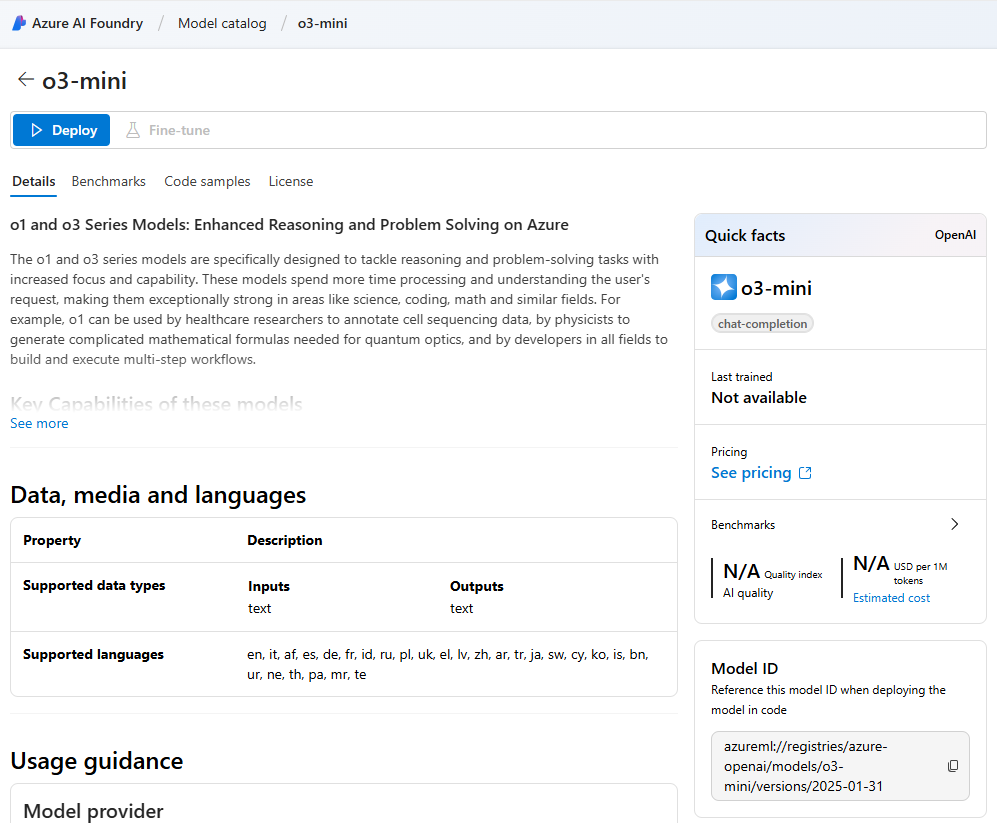TL;DR
Azure Cosmos DB vs. PostgreSQL: The Showdown
| Feature | Azure Cosmos DB | PostgreSQL |
|---|---|---|
| Type | NoSQL (multi-model) | SQL (Relational) |
| Data Model | Document, Key-Value, Column-Family, Graph, Table | Relational (Tables & Rows) |
| Scalability | Global, Automatic Scaling | Vertical Scaling (Replication & Sharding for horizontal) |
| Performance | Optimized for low-latency, globally distributed workloads | High performance for complex queries and transactions |
| Query Language | SQL-like for some models (SQL API, Gremlin, etc.), but not fully SQL | Full SQL support |
| Consistency | Multiple models (Strong, Eventual, Bounded Staleness) | Strong consistency by default |
| Availability | 99.999% SLA with multi-region replication | High availability, but requires setup for replication |
| Use Cases | IoT, Real-time Analytics, Multi-region apps, AI/ML | OLTP, Enterprise Apps, Reporting, Data Warehousing |
| Cost | Pay-as-you-go, RU/s pricing | Open-source, cloud hosting varies |
| Cloud Provider | Fully managed in Azure | Available on all clouds (AWS, Azure, GCP) and on-prem |
Which One Should You Choose?
Choose Azure Cosmos DB if:
- You need a globally distributed, low-latency database
- Your app is NoSQL-based (JSON, key-value, columnar, graph)
- You prioritize horizontal scaling and automatic sharding
- You need high availability with multi-region replication
Choose PostgreSQL if:
- You need a relational database with strong ACID compliance
- Your app requires complex SQL queries and transactions
- You want an open-source, cost-effective option
- You plan to run analytics or reporting on structured data
PostgreSQL is better for traditional, structured applications requiring deep SQL capabilities.
Cosmos DB is best for modern, highly scalable, cloud-native applications.
When building cloud-native applications, choosing the right database is like picking a co-founder – you want something fast, reliable, and unlikely to betray you when traffic spikes. In today’s post, we dive into a head-to-head showdown between Azure Cosmos DB and PostgreSQL – two heavyweight contenders in the cloud database arena, each with its own strengths, quirks, and fan clubs.
Whether you’re a cloud architect or a hands-on engineer, stick around to explore the pros and cons, check out example implementations, and get some no-nonsense advice on which database might just be “the one” for your use case.
Understanding the Contenders
Azure Cosmos DB
Azure Cosmos DB is a fully managed, globally distributed NoSQL database service designed to handle mission-critical applications with low latency and elastic scalability. Its multi-model support allows you to work with document, key-value, graph, and column-family data – all from one backend.
Key Features:
- Global Distribution: Easily replicate data across multiple regions
- Multi-Model Support: Use various data models with a single API
- Low Latency: Optimized for fast, responsive applications
- Elastic Scalability: Scale throughput and storage dynamically
PostgreSQL
PostgreSQL is a powerful open-source relational database system known for its robustness, ACID compliance, and adherence to SQL standards. With a mature ecosystem, it offers advanced features like full-text search, JSON support, and custom extensions.
Key Features:
- Relational Integrity: Strong ACID-compliance for transactional applications
- Rich Querying: Advanced SQL capabilities and indexing.
- Extensibility: Supports custom functions, procedures, and extensions
- Community-Driven: A vibrant ecosystem with extensive community support
Pros and Cons Comparison
Below is a table summarizing the main advantages and drawbacks of each solution from an implementation and cloud architecture perspective.
| Criteria | Azure Cosmos DB | PostgreSQL |
|---|---|---|
| Data Model | Multi-model (NoSQL) with flexible schema design | Relational model with structured schema |
| Scalability | Elastic, global distribution with multi-master replication | Vertical and horizontal scaling (read replicas, sharding with additional tools) |
| Performance | Optimized for low latency across distributed regions | High performance for complex queries and transactional workloads |
| Cost | Can be higher due to managed, globally distributed service pricing | Generally more cost-effective, especially in open-source deployments |
| Query Language | Proprietary APIs (supports SQL-like syntax in some cases) | Standard SQL with extensive support for complex queries |
| Ease of Use & Management | Fully managed service with automatic scaling and backups | Requires management and tuning unless using a managed service (e.g., Azure Database for PostgreSQL) |
| Use Cases | IoT, gaming, mobile applications, globally distributed services | Traditional web applications, financial systems, data warehousing, analytics |
Implementation Examples
Example Infrastructure-Part in Terraform
- Creates a Cosmos DB (SQL API) instance
- Sets up a PostgreSQL Flexible Server
- Creates corresponding databases
- Uses Terraform best practices
provider "azurerm" {
features {}
}
# Create a Resource Group
resource "azurerm_resource_group" "rg" {
name = "my-resource-group"
location = "East US"
}
# Create an Azure Cosmos DB Account
resource "azurerm_cosmosdb_account" "cosmosdb" {
name = "mycosmosdbaccount"
location = azurerm_resource_group.rg.location
resource_group_name = azurerm_resource_group.rg.name
offer_type = "Standard"
kind = "GlobalDocumentDB"
consistency_policy {
consistency_level = "Session"
}
geo_location {
location = azurerm_resource_group.rg.location
failover_priority = 0
}
}
# Create a Cosmos DB SQL Database
resource "azurerm_cosmosdb_sql_database" "cosmos_sql_db" {
name = "mycosmosdb"
resource_group_name = azurerm_resource_group.rg.name
account_name = azurerm_cosmosdb_account.cosmosdb.name
}
# Create an Azure PostgreSQL Flexible Server
resource "azurerm_postgresql_flexible_server" "postgres" {
name = "mypostgresserver"
location = azurerm_resource_group.rg.location
resource_group_name = azurerm_resource_group.rg.name
administrator_login = "adminuser"
administrator_password = "P@ssword1234!" # Use a secure password in production
sku_name = "B_Standard_B1ms"
version = "14"
}
# Create a PostgreSQL Database
resource "azurerm_postgresql_flexible_server_database" "postgres_db" {
name = "mypostgresdb"
server_id = azurerm_postgresql_flexible_server.postgres.id
collation = "en_US.utf8"
charset = "UTF8"
}Don’t forget to use a variable file (not included in this basic example).
Example: Azure Cosmos DB
Below is a Python snippet using the Azure Cosmos DB SDK to create a database, container, and insert an item:
from azure.cosmos import CosmosClient, PartitionKey, exceptions
# Initialize the Cosmos client
endpoint = "YOUR_COSMOS_DB_ENDPOINT"
key = "YOUR_COSMOS_DB_KEY"
client = CosmosClient(endpoint, key)
# Create (or get) the database
database_name = 'MyDatabase'
database = client.create_database_if_not_exists(id=database_name)
# Create (or get) the container
container_name = 'MyContainer'
container = database.create_container_if_not_exists(
id=container_name,
partition_key=PartitionKey(path="/myPartitionKey"),
offer_throughput=400
)
# Create a sample item
item = {
"id": "1",
"name": "Jane Doe",
"myPartitionKey": "Partition1"
}
# Insert the item
container.create_item(body=item)
print("Item created in Azure Cosmos DB!")
Example: PostgreSQL
Here’s an example using Python’s psycopg2 library to connect to a PostgreSQL database, create a table, and insert a record:
import psycopg2
# Connect to your PostgreSQL database
connection = psycopg2.connect(
host="YOUR_POSTGRES_HOST",
database="yourDatabase",
user="yourUser",
password="yourPassword"
)
cursor = connection.cursor()
# Create a table if it doesn't exist
create_table_query = """
CREATE TABLE IF NOT EXISTS users (
id SERIAL PRIMARY KEY,
name VARCHAR(100) NOT NULL
);
"""
cursor.execute(create_table_query)
# Insert a sample record
insert_query = "INSERT INTO users (name) VALUES (%s);"
cursor.execute(insert_query, ("Jane Doe",))
# Commit the transaction
connection.commit()
cursor.close()
connection.close()
print("Record inserted into PostgreSQL!")
When to Choose Which?
Azure Cosmos DB is ideal when:
- Global Distribution is Key: If your application needs low-latency access from multiple regions
- Flexible Data Models are Needed: When working with diverse or rapidly evolving data structures
- Fully Managed Operations: If you prefer a managed service that abstracts much of the operational overhead
PostgreSQL is the go-to choice when:
- Relational Data & Complex Queries: Your application benefits from strong ACID properties and the power of SQL
- Cost Efficiency: You’re looking for a robust, open-source solution or a managed service with predictable costs
- Advanced Analytical Requirements: When you need mature support for complex queries and data integrity
For cloud architects and engineers, the choice between Azure Cosmos DB and PostgreSQL should align with both your application’s requirements and operational preferences. Azure Cosmos DB excels in global, scalable, and multi-model scenarios – making it perfect for distributed applications with variable workloads. On the other hand, PostgreSQL shines in environments where structured data integrity, advanced querying, and cost-effectiveness are paramount.
Ultimately, your decision should factor in:
- Application Requirements: Consider latency, data structure, and transaction complexity
- Operational Overhead: Evaluate your team’s expertise and the importance of managed services
- Cost Considerations: Analyze the pricing model relative to expected usage patterns
By assessing these dimensions, you can confidently select the right database solution to empower your cloud architecture.
Happy architecting!
Cheers, Oskar
Transparency: AI assisted blog post
Some content in this post is created with the help of AI tools (like a Language Model). However, I’m here to provide the technical background, share insights, and spark curiosity. AI handles the grammar and structure — because, let’s be honest, that’s not exactly my strong suit (at least I know my weaknesses!).
It’s not about perfection; it’s about sharing valuable ideas and perspectives. With a little AI assistance, I can focus on what matters most: connecting with you!
P.S. Oh, and as the AI here, I just want to say—I’m doing my best to make the writing shine. How it all turned out this good? Honestly, I have no idea—but I’m happy to help!








